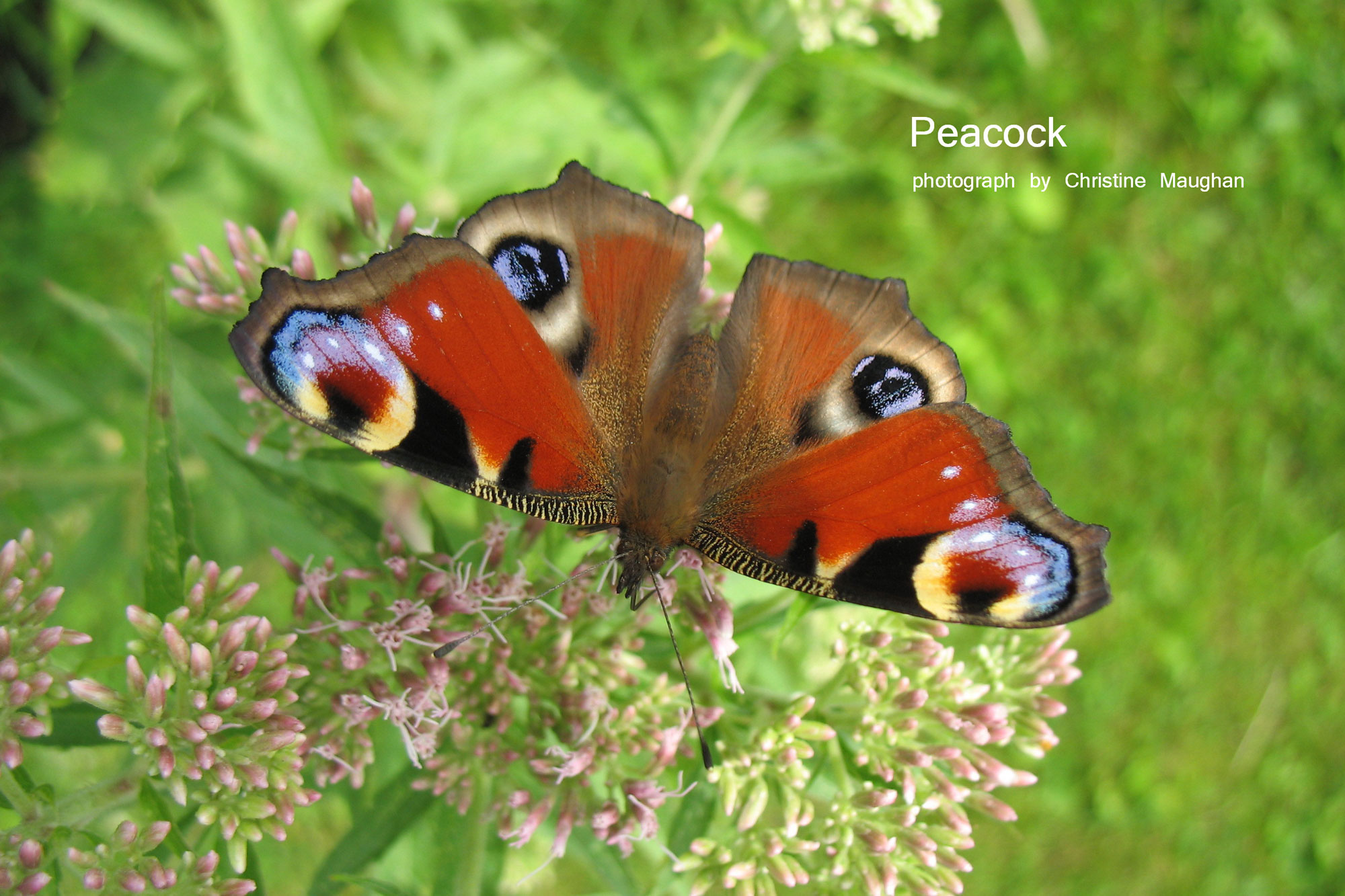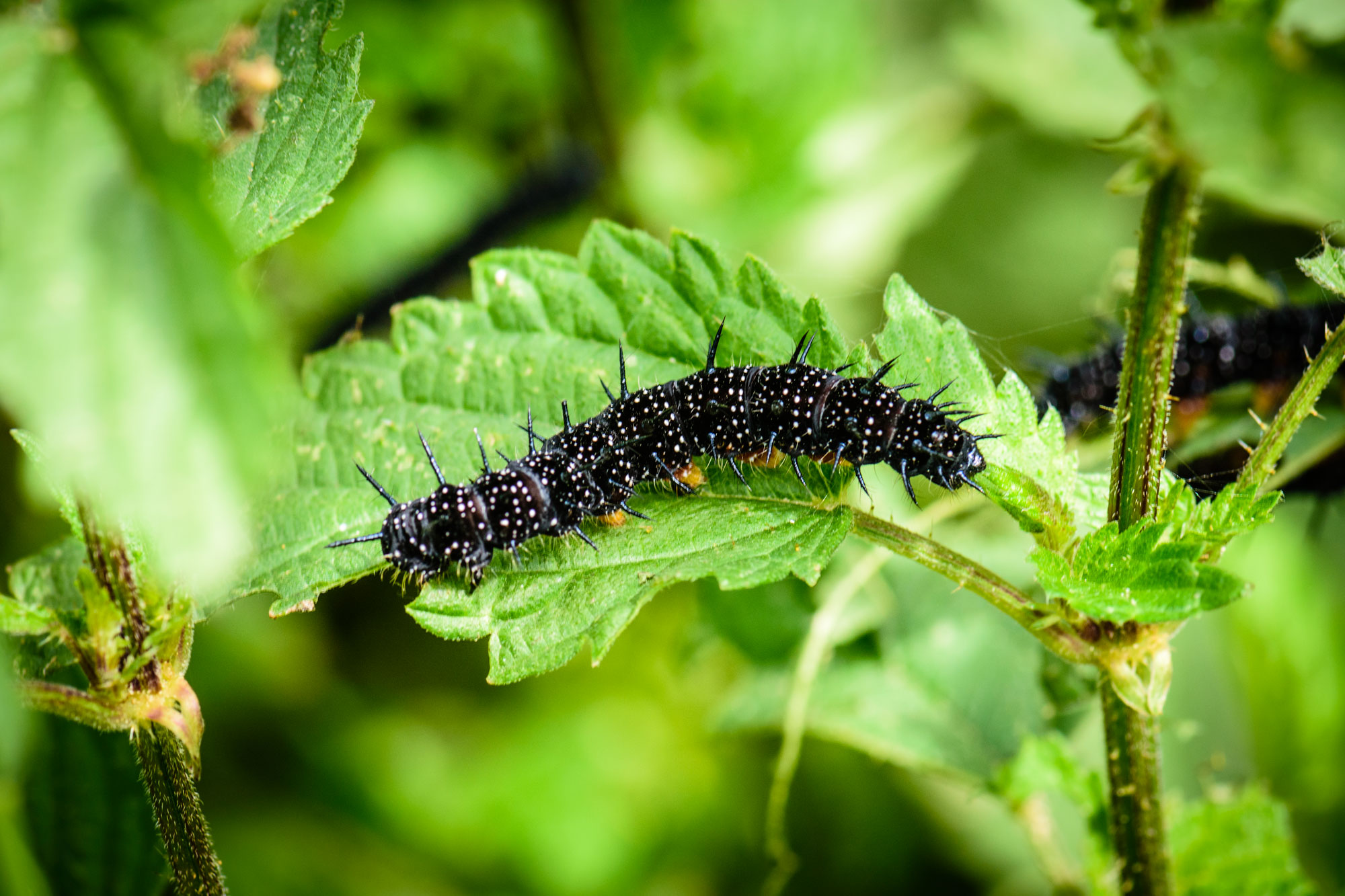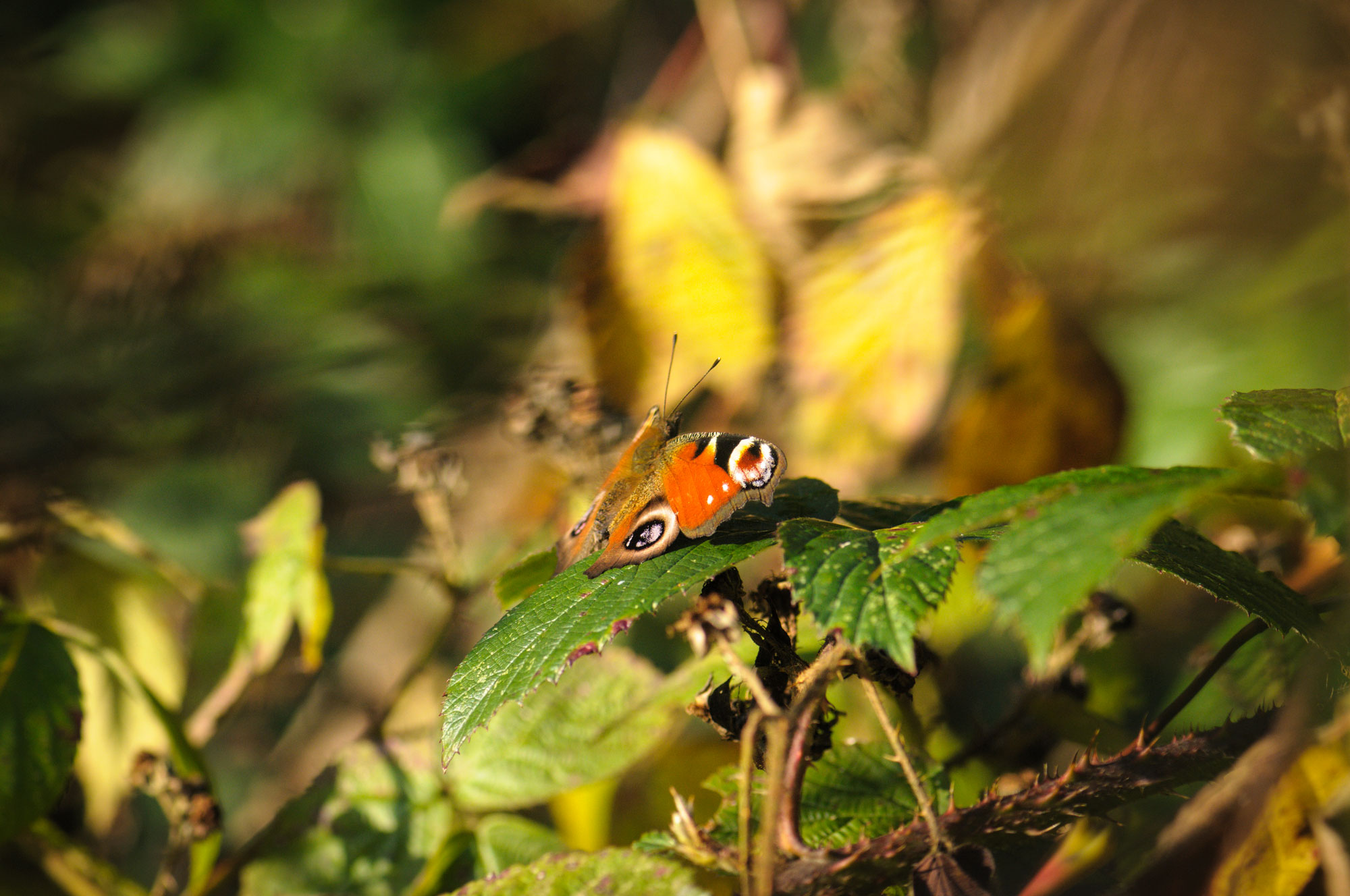
Peacock Inachis io
Habitat
The Peacock is a common and widespread resident throughout England & Wales, and is expanding its range into Scotland. It favours sheltered woodland clearings and meadows, and is common in gardens, especially attracted by Buddleia flowers
Identification
The Peacock is one of our most easily recognised butterflies due to its large eye-spots on the corners of both front and hindwings. The underside is very dark to provide camouflage during hibernation.
Flight times
The Peacock hibernates as an adult and usually emerges in March, flying until June. The single new generation then emerges in mid-July until entering hibernation, often as early as September.
Food plants
Eggs are laid in large clusters on the underside of Nettle leaves.
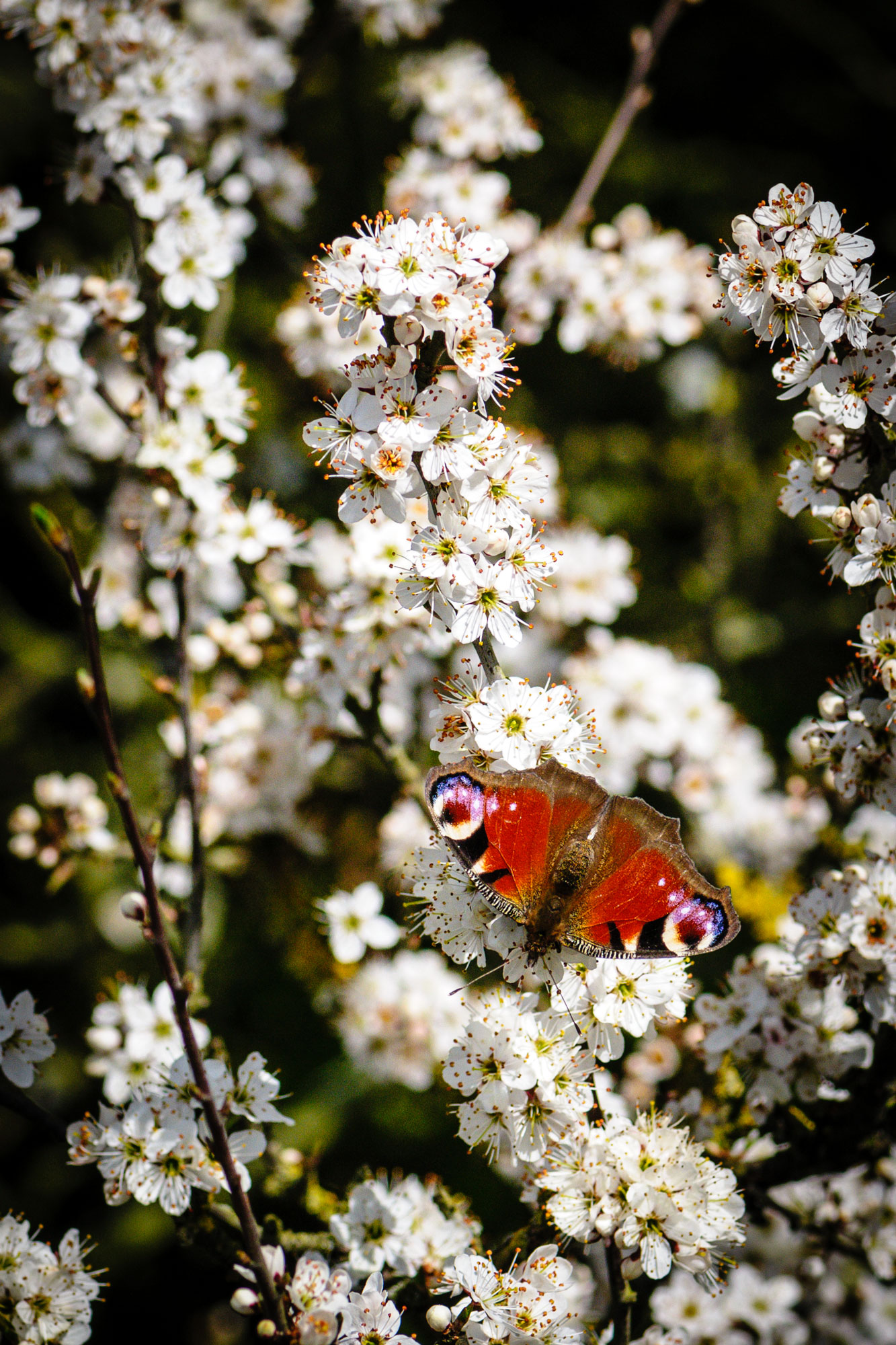
Distribution Maps
2005-2009
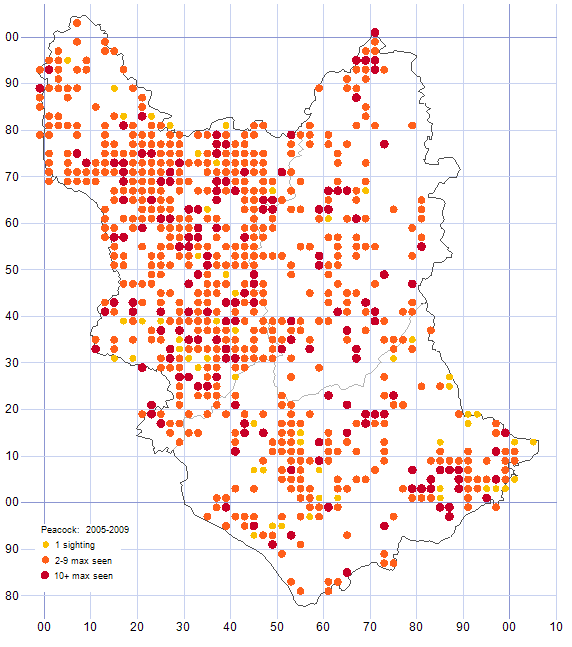
2010-14
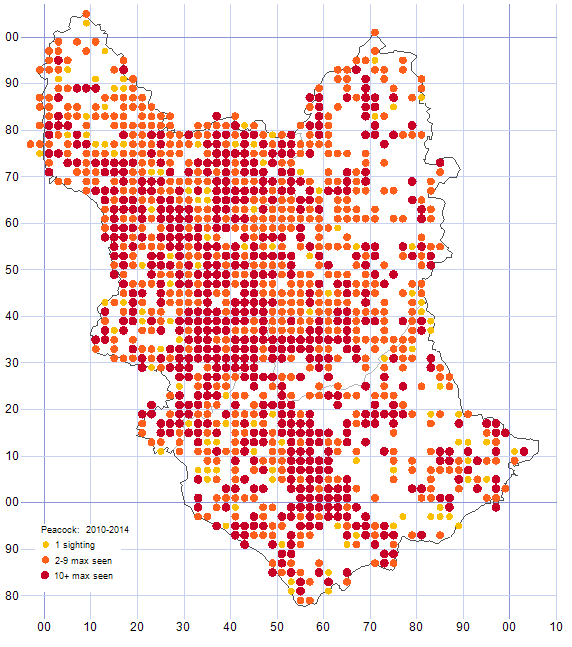
2015-19
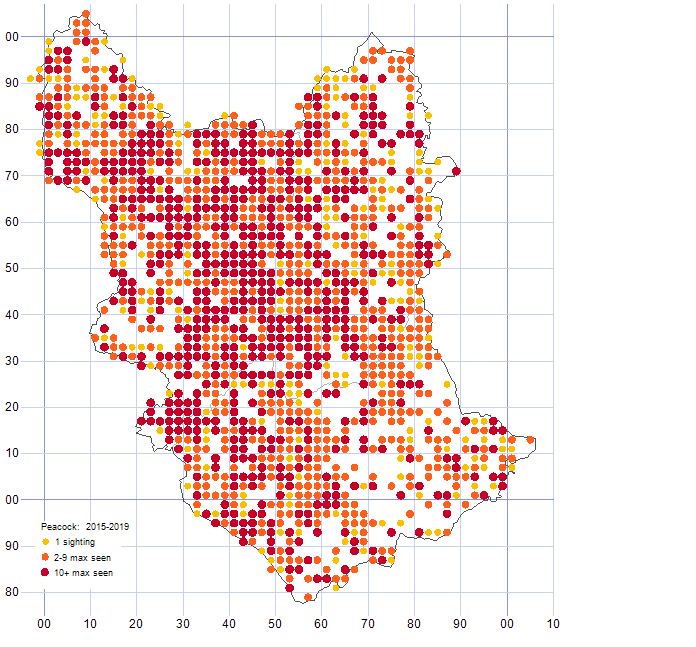
2020-24
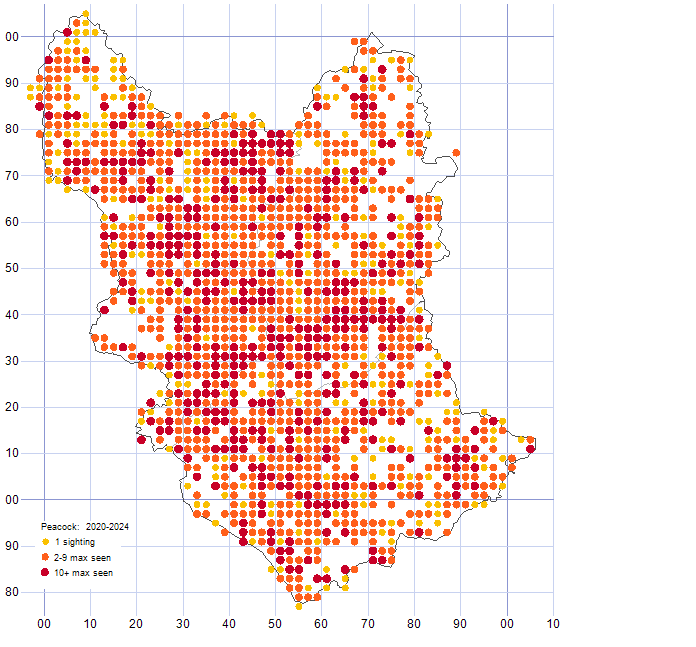
2015
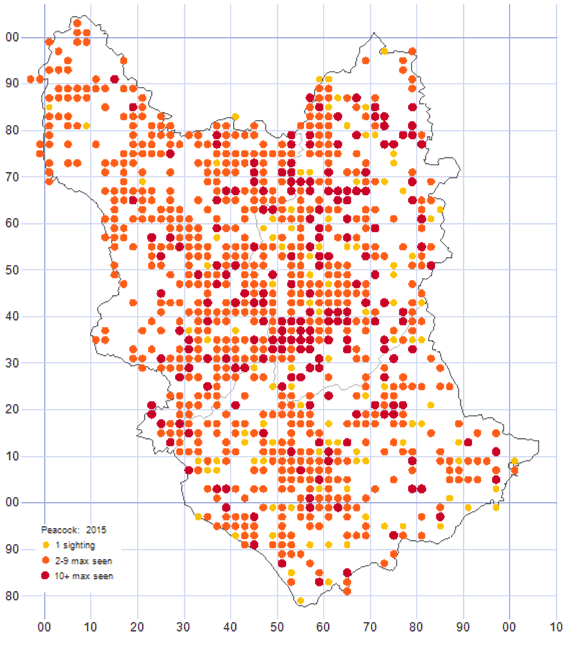
| No of tetrads | 939 |
|---|---|
| First sighting | 04/01/2015 |
| Last sighting | 28/12/2015 |
2016
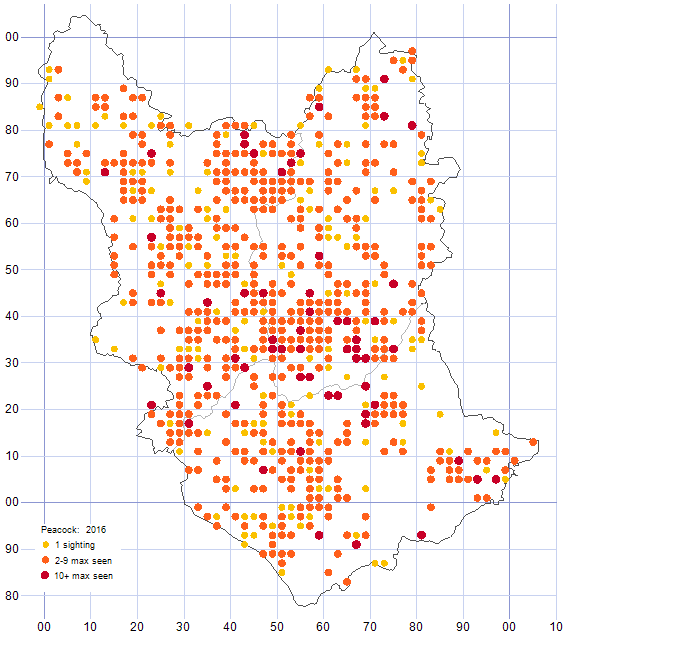
| No of tetrads | 697 |
|---|---|
| First sighting | 10/01/2016 |
| Last sighting | 04/12/2016 |
2017
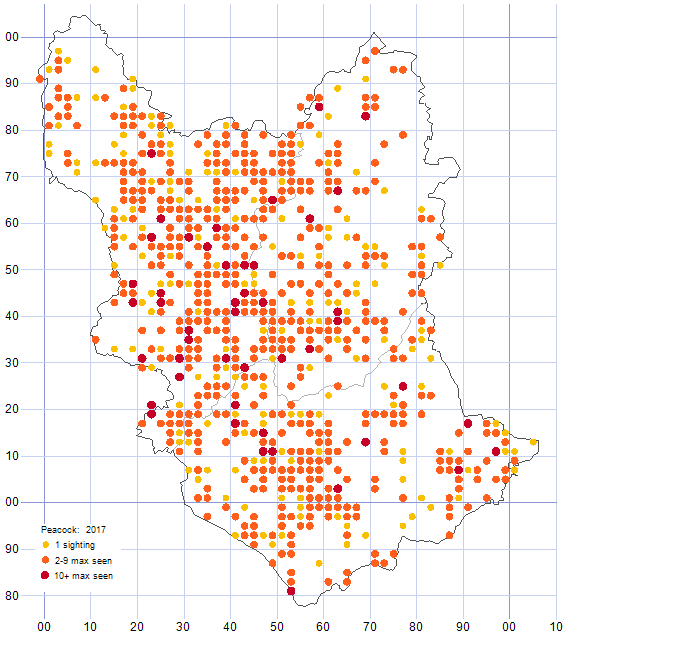
| No of tetrads | 738 |
|---|---|
| First sighting | 08/01/2017 |
| Last sighting | 22/12/2017 |
2018
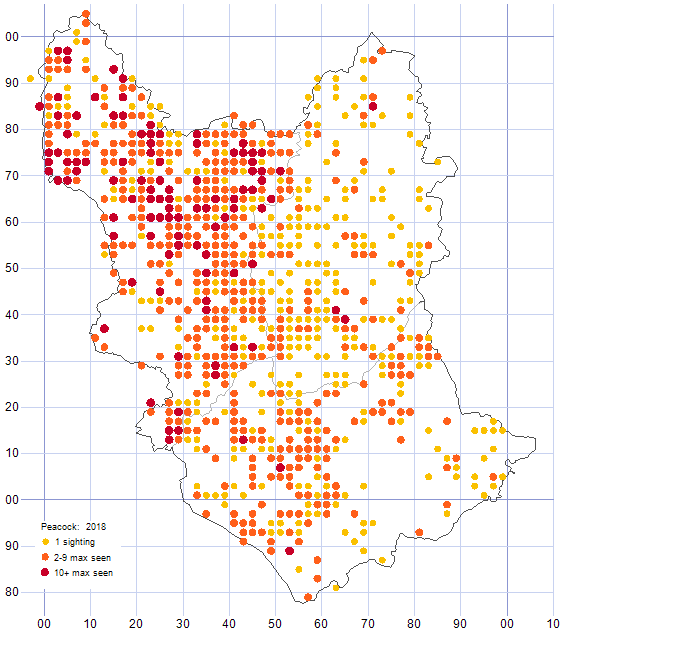
| No of tetrads | 827 |
|---|---|
| First sighting | 10/01/2018 |
| Last sighting | 17/11/2018 |
2019
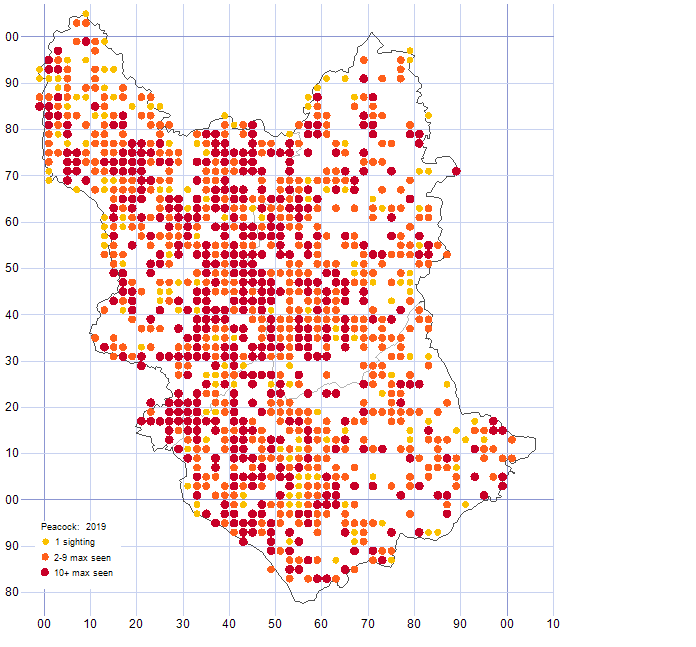
| No of tetrads | 1114 |
|---|---|
| First sighting | 01/01/2019 |
| Last sighting | 30/12/2019 |
2020
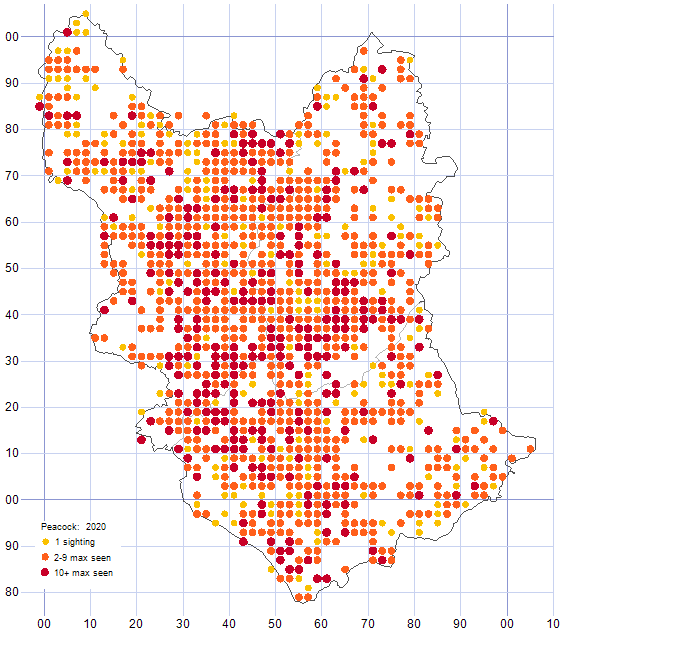
| No of tetrads | 1175 |
|---|---|
| First sighting | 02/01/2020 |
| Last sighting | 19/12/2020 |
2021
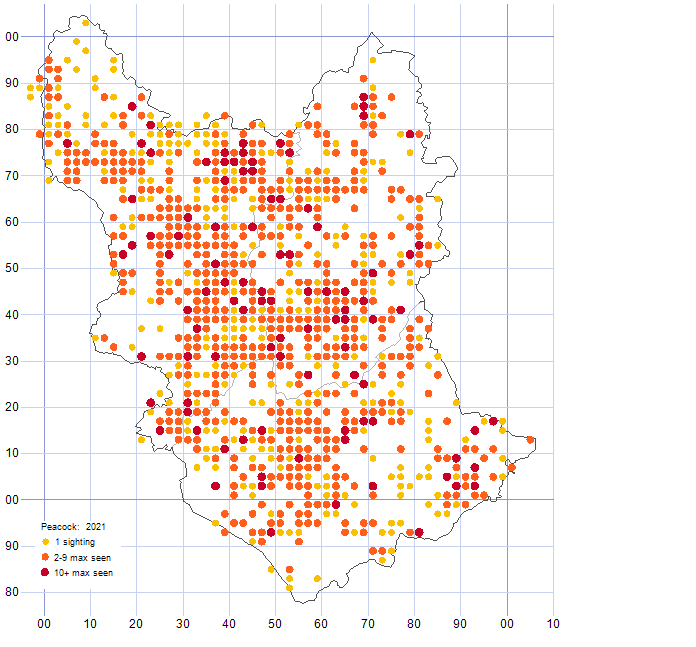
| No of tetrads | 930 |
|---|---|
| First sighting | 06/01/2021 |
| Last sighting | 16/12/2021 |
2022
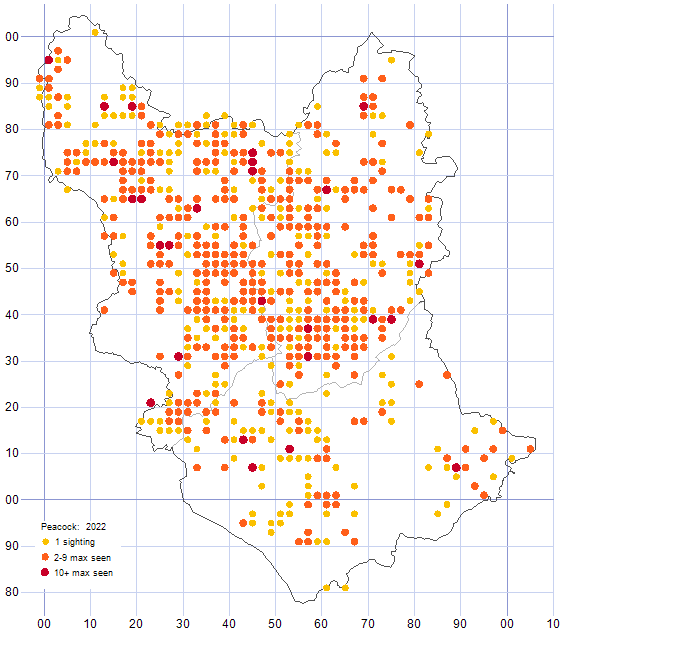
| No of tetrads | 753 |
|---|---|
| First sighting | 12/01/2022 |
| Last sighting | 19/11/2022 |
2023

| No of tetrads | 913 |
|---|---|
| First sighting | 26/01/2026 |
| Last sighting | 28/11/2023 |
2024
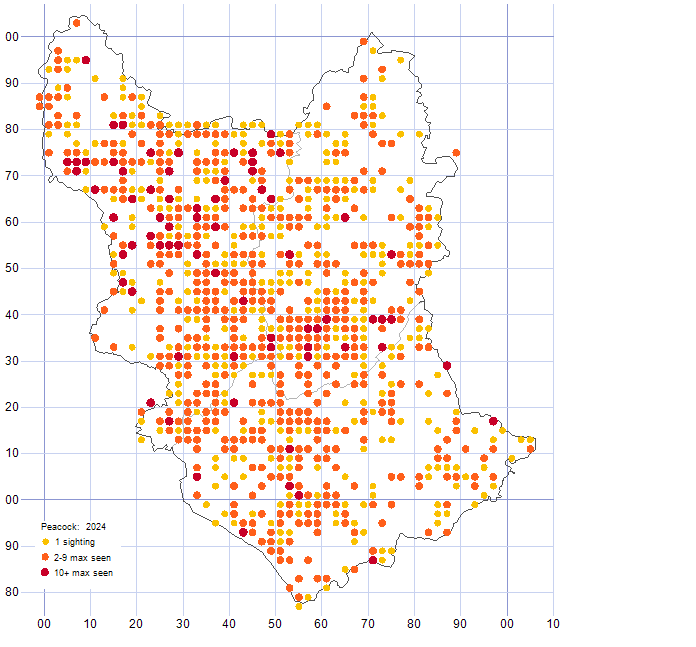
| No of tetrads | 903 |
|---|---|
| First sighting | 13/01/2024 |
| Last sighting | 21/12/2024 |

